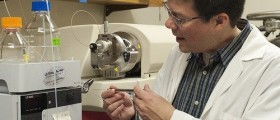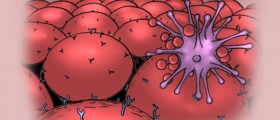
Gene delivery is a revolutionary method which takes medicine and any human science on a completely new level. Basically, new genes can be delivered in either cells extracted from a patient or the cells which are still present in the body of this person. There are numerous gene delivery systems, depending on the cells chosen, the duration of gene expression necessary for the required effect and the size of the DNA string used in the process.
The Gene Delivery Process
Firstly, genes can be delivered to one's cells through viruses. Namely, these microorganisms are modified and their capability of entering an organism and cells, altering the DNA are used. Since the viral organisms used for this delivery are deprived of their malignant genes, they end up carrying the treatment gene instead, delivering it into the desired cells. Also, these genetically engineered viruses are modified so that they cannot multiply once in the organism, being harmless.
Secondly, genes can reach a cell through synthetic envelopes of fat molecules. Since the membranes of our existing cells contain a large number of fat molecules, these envelopes can merge with these membranes and deliver the genes in the process.
Alternatively, a small electric charge applied onto the membrane of a cell can create an entry through which genes can be inserted into the cell. During the early stages of the development of this method, called electroporation, experts did not know how much electricity is necessary for opening the membranes. Today, however, we have special, bionic chips which solve the problem. These microscopic devices contain a single living cell in a silicone circuit. The chip records the necessary amount of electricity necessary for the membrane of a cell to open, allowing scientists to get hold of this crucial information, vital for future endeavors of this type.
The Importance of Gene Therapy
Depending on the purpose of the gene therapy, methods of gene delivery may vary. Thus, cystic fibrosis patients, for example, may need to inhale the gene therapy. On the other hand, cancer patients usually get genes injected directly into their tumors. Also, hemophilia patients get the gene therapy injected into the liver tissue.
All in all, genetics is a branch of medicine which is constantly improving, holding great promise for the future of treating illnesses which are considered incurable today. However, more research needs to be done in order to reach the final goal, which is finding ways of curing people's illnesses completely, by using gene delivery methods which will work at all times.

















Your thoughts on this
Loading...